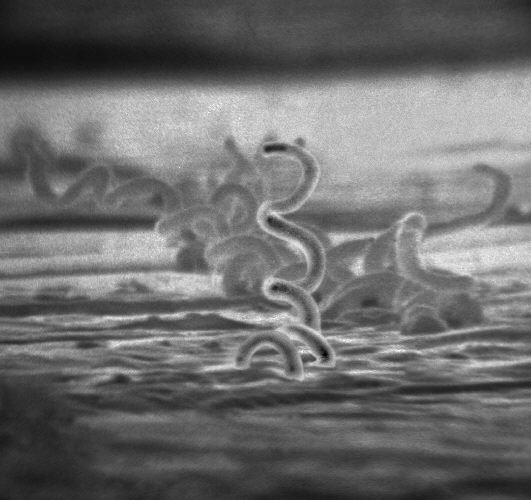Due to the outstanding scientists with decades of experience in producing antibodies at Creative Biolabs, we can provide our clients with complete, one-stop antibody products and solutions.
What is Syphilis?
The bacteria that causes syphilis, a sexually transmitted infection, is called Treponema pallidum (T. pallidum). In 2015, there were approximately 45.4 million syphilis infections worldwide. The major way that syphilis is spread is through sexual interaction. Congenital syphilis can develop if the mother contracts the disease while pregnant or gives birth to the kid.
Syphilis can present in one of four different stages: primary, secondary, latent, and tertiary, whose signs and symptoms change, respectively. Although there may be many sores, the initial stage typically manifests as a single chancre, which is a hard, painless, non-itchy skin ulceration that is typically between 1 cm and 2 cm in diameter. The palms of the hands and soles of the feet are frequently affected by the widespread rash that characterizes secondary syphilis. Mouth or vaginal sores could also exist. Few to no symptoms are present with latent syphilis, which can go undetected for years. Gumma, identified as soft and non-cancerous growths, neurological issues, or heart complaints are all signs of tertiary syphilis.
What Causes Syphilis?
The spirochaete bacterium T. pallidum, formerly known as Spirochaeta pallida, is the culprit behind syphilis, bejel (sometimes referred to as endemic syphilis), and yaws. Only humans can transmit it. The T. pallidum subspecies has tiny, 1.14 Mbp chromosomes. T. pallidum is unable to grow in pure culture and is dependent on its host for a variety of chemicals produced by biosynthetic pathways and the missing genes that code for essential enzymes in the tricarboxylic acid cycle and oxidative phosphorylation.
T. pallidum is a highly mobile, helically coiled bacteria that is typically 0.1-0.2 μm wide and 6-15 μm long. An outer membrane, peptidoglycan layer, inner membrane, protoplasmic cylinder, and periplasmic space comprise the structure of T. pallidum. Despite lacking lipopolysaccharide, which is present in the outer membrane of other Gram-negative bacteria, T. pallidum is frequently referred to be Gram-negative. Only when combining dark field illumination with light microscopy can treponemes be identified.
 Fig.1 Electron micrograph of T. pallidum. (Wikipedia)
Fig.1 Electron micrograph of T. pallidum. (Wikipedia)
Antibody About Syphilis
Tp15, Tp17, Tp45, and Tp47 are outer-membrane proteins found in T. pallidum, the syphilis-causing organism. Tp45 IgM first shows up when TP-IgM and TP-IgG antibodies are tested in human serum infected with T. pallidum, followed by an increase in Tp15 IgM. The positive rates of all TP-IgG increase as the condition worsens. Anti-syphilis treatment based on antibiotics causes a decrease in the expression levels of Tp17 IgG and Tp47 IgG. These outer-membrane proteins can be thought of as potential syphilis serological detection signals when combined.
A well-known biotechnology company, Creative Biolabs has a brilliant workforce of trained researchers and cutting-edge equipment. Please don't hesitate to contact us if you have any queries regarding producing antibodies for your Syphilis research.
Other Antibody Products
- Sun, Ran.; et al. Treponema pallidum-specific antibody expression for the diagnosis of different stages of syphilis. Chinese medical journal. 2013, 126: 206-210.